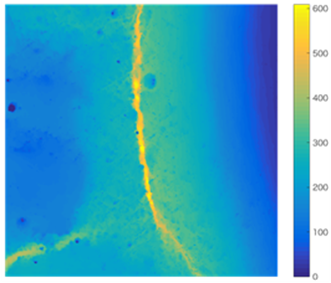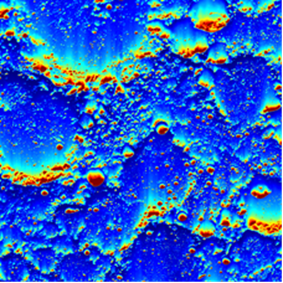Analysis of landing site candidates required for system-level technical study
JAXA Supercomputer System Annual Report April 2016-March 2017
Report Number: R16E0063
- Responsible Representative: Kazuyoshi Kawasaki(Deputy Director, Space Exploration Innovation Hub Center)
- Contact Information: Takeshi Hoshino(hoshino.takeshi@jaxa.jp)
- Members: Takeshi Hoshino, Mitsuo Yamamoto
- Subject Category: Space(Moon Planet)
Abstract
The sunshine period and the communication visibility, which are criteria for selecting the landing site, are obtained by simulation and analysis. We will reflect these results in the system level study of the lunar lander.
Goal
Selection of lunar landing site where maximum outcome can be expected from the viewpoint of engineering, scientific and resource exploration.
Objective
Simulation and analysis for lunar landing site selection using remote sensing data of Kaguya and LRO.
References and Links
N/A
Use of the Supercomputer
In order to improve the efficiency of both the sunshine period and the communication visibility simulation, the analysis results based on the adjusted input data and the existing input data are compared. A database prototype for the fast simulation algorithm different from the existing method was created.
Necessity of the Supercomputer
The sunshine period and the communication visibility simulation need to deal with a large amount of topographical data, and it is necessary to calculate with a time interval of 1 hour or less over several years. Therefore, it requires a large amount of memory and computing power.
Achievements of the Year
Figure 1 shows the calculation of the sunshine period for the two years of the rim of the Whipple crater on the moon’s north pole. By using the DEM resolution corresponding to the spacial resolution to be calculated, speedup of calculation is attempted.
Fig. 2 is a horizon database of 300 km square around the Moon North Pole. By calculating the elevation of the entire horizon at each point in advance, it is possible to greatly shorten the time required for sunshine calculation.
Publications
Non peer-reviewed articles
1) An analysis of illumination conditions by altitude for a landing site near the Lunar north pole, 48th Lunar and Planetary Science Conference (LPSC XLVIII)
http://www.hou.usra.edu/meetings/lpsc2017/pdf/1376.pdf
Computational Information
- Parallelization Methods: Thread Parallelization
- Process Parallelization Methods: n/a
- Thread Parallelization Methods: OpenMP, Automatic Parallelization
- Number of Processes: 1
- Number of Threads per Process: 12
- Number of Nodes Used: 1
- Elapsed Time per Case (Hours): 6
- Number of Cases: 10
Resources Used
Total Amount of Virtual Cost(Yen): 115,462
Breakdown List by Resources
| System Name | Amount of Core Time(core x hours) | Virtual Cost(Yen) |
|---|---|---|
| SORA-MA | 0.00 | 0 |
| SORA-PP | 1,227.66 | 10,481 |
| SORA-LM | 0.00 | 0 |
| SORA-TPP | 0.00 | 0 |
| File System Name | Storage assigned(GiB) | Virtual Cost(Yen) |
|---|---|---|
| /home | 320.09 | 3,019 |
| /data | 5,275.12 | 49,760 |
| /ltmp | 5,533.86 | 52,201 |
| Archiving System Name | Storage used(TiB) | Virtual Cost(Yen) |
|---|---|---|
| J-SPACE | 0.00 | 0 |
Note: Virtual Cost=amount of cost, using the unit price list of JAXA Facility Utilization program(2016)
JAXA Supercomputer System Annual Report April 2016-March 2017




